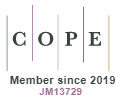Alternative Modernity of the Princely states- Evaluating the Architecture of Sayajirao Gaekwad of Baroda
DOI:
https://doi.org/10.15415/cs.2018.52001Keywords:
Asian modernity, Modernist vision, Reforms, ArchitectureAbstract
The first half of the 20th century was a turning point in the history of India with provincial rulers making significant development that had positive contribution and lasting influence on India’s growth. They served as architects, influencing not only the socio-cultural and economic growth but also the development of urban built form. Sayajirao Gaekwad III was the Maharaja of Baroda State from 1875 to 1939, and is notably remembered for his reforms. His pursuit for education led to establishment of Maharaja Sayajirao University and the Central Library that are unique examples of Architecture and structural systems. He brought many known architects from around the world to Baroda including Major Charles Mant, Robert Chrisholm and Charles Frederick Stevens. The proposals of the urban planner Patrick Geddes led to vital changes in the urban form of the core city area. New materials and technology introduced by these architects such as use of Belgium glass in the flooring of the central library for introducing natural light were revolutionary for that period. Sayajirao’s vision for water works, legal systems, market enterprises have all been translated into unique architectural heritage of the 20th century which signifies innovations that had a lasting influence on the city’s social, economic, administrative structure as well as built form of the city and its architecture. This paper demonstrates how the reformist ideas and vision of an erstwhile provincial ruler lead to significant architecture at the turn of the century in Princely state of Vadodara.
Search Keywords for This Page
Maharaja sayajirao gaekwad, Sayajirao gaekwad, Sayajirao gaekwad iii, Baroda state, Gaekwad of baroda, Sayajirao gaekwad palace, Gaekwad, Central library vadodara, Gaikwad palace baroda, Baroda princely state, Central library vadodara Wikipedia, Princely state of baroda, Sayajirao gaekwad university, Gaekwad palace, Sayajirao gaekwad library, Sayajirao gaekwad 2, Gaikwad of baroda
Downloads
References
[2] Geddes, P. (1916). Development and Expansion of the City of Baroda. Report published by Order of Governance: Lakshmi Vilas Press.
[3] Jeyaraj, G. (2011). Indo Saracenic Architecture in Chennai. Chennai: Hindustan University.
[4] Joshi, Sanjeev (2015). Robert ‘Fellowes’ Centennial Exhibition 2015, Vadodara, Indian architect & builder, published by Jasubhai Media Pvt. Ltd, Mumbai, 38 , May 2015, 28(9).
[5] Lang, J., Desai, M. and Desai, M. (1997). Architecture and independence: The search for Identity-India 1818 to 1980. Oxford University Press.
[6] Laxmi Villas Palace (2012). Maharaja Sayajirao Gaekwad III. gaekwadsofbaroda.com accessed May’2014.
[7] Metcalfe, Thomas R. (1982). A Tradition Created: Indo-Saracenic Architecture under the Raj,Published in History Today 32 Issue: 9.
[8] Nagar, M. (1992). Shri Sayajirao Gaikwad, Maharaja of Baroda: The Prime Promoter of Public Libraries, 25
[9] Ramusack, B. (2008). The Indian Princes and their States, Cambridge Histories Online: Cambridge University Press, 197–198, 218.
[10] Sergeant, P. W. (1928). The Ruler Of Baroda ; An Account Of The Life And Work Of The Maharaja Gaekwar. John Murray London: Universal Library.
[11] Singh, H. (2007). Colonial and postcolonial historiography and the princely states’; ‘Indian princely states, People, Princes and Colonialism edited by Ernst Waltraud and Pati Biswamoy: Routledge Publishers, 15.
[12] Waltraud, E. and Biswamoy, P. (Eds.) (2007). Indian Princely States: People, Princes and Colonialism Routledge, 7–8.
[13] Wikipedia. Separate Systems wikipedia.org/wiki/ Separate_system accessed March 2013
[14] Wikipedia, Panopticon’ wikipedia.org/wiki/Panopticon accessed March 2013
Downloads
Published
Issue
Section
License
Articles in the Journal of Creative Space (Creat. Sp.) by Chitkara University Publications are Open Access articles that are published with licensed under a Creative Commons Attribution- CC-BY 4.0 International License. Based on a work at https://cs.chitkara.edu.in. This license permits one to use, remix, tweak and reproduction in any medium, even commercially provided one give credit for the original creation.
View Legal Code of the above-mentioned license, https://creativecommons.org/licenses/by/4.0/legalcode
View Licence Deed here https://creativecommons.org/licenses/by/4.0/
 |
Journal of Creative Space by Chitkara University Publications is licensed under a Creative Commons Attribution 4.0 International License. Based on a work at https://cs.chitkara.edu.in/ |







